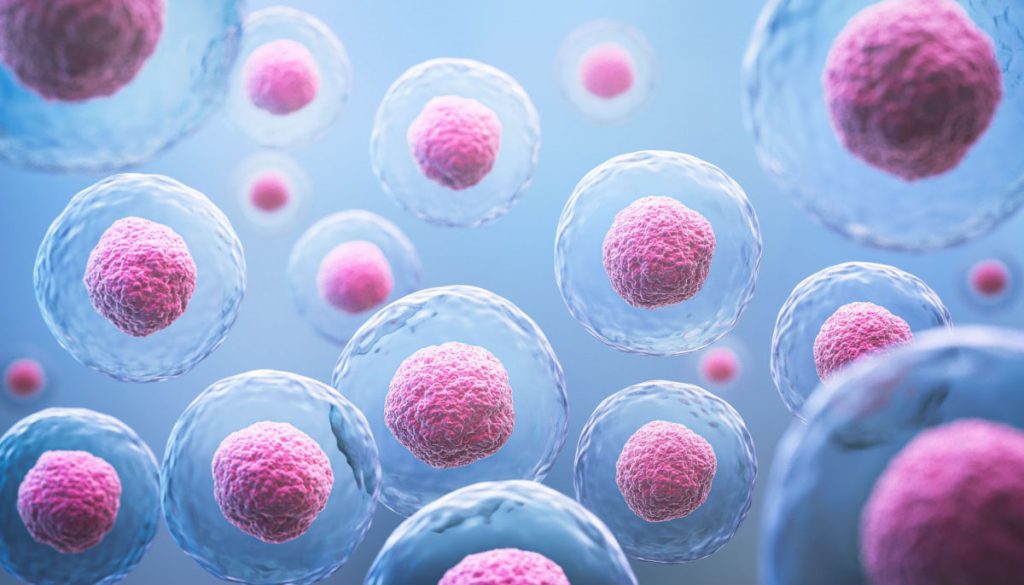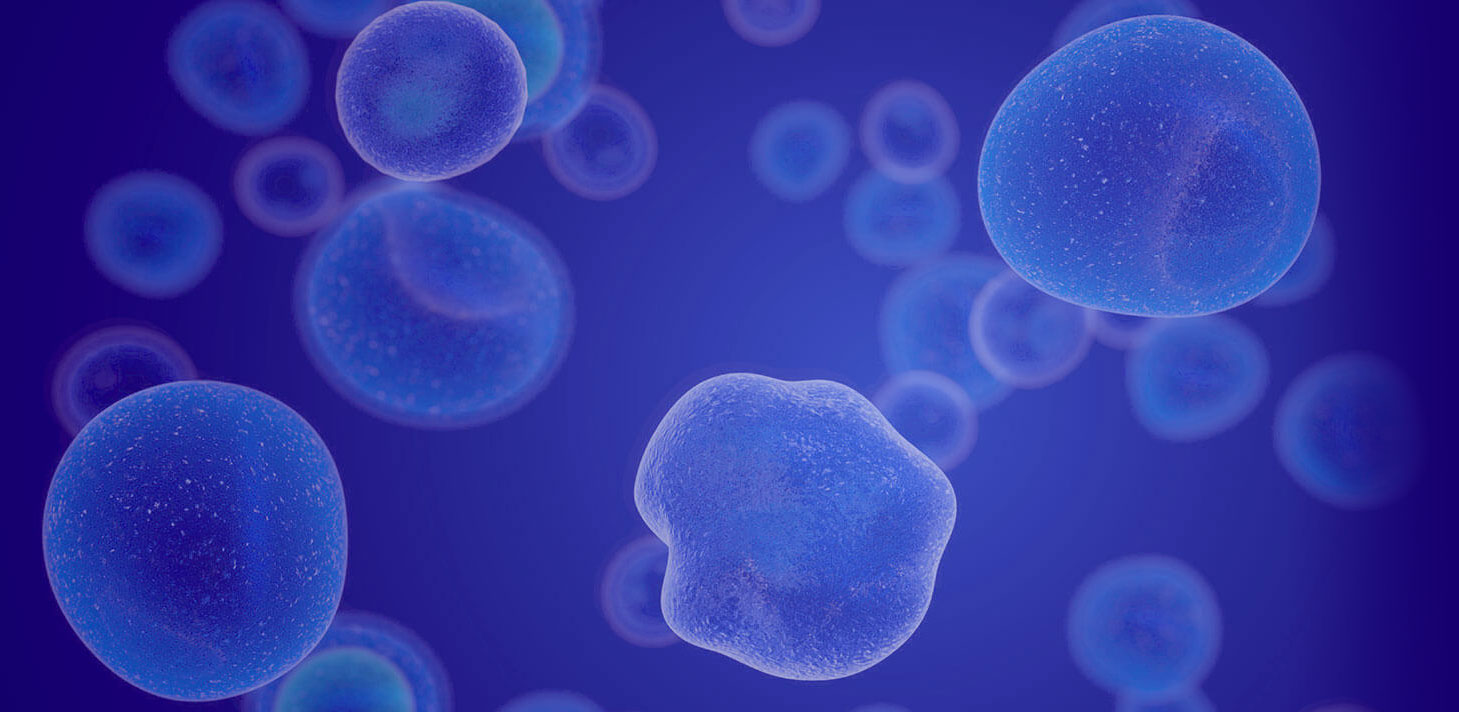Stem Cells for Fibromyalgia
Conveniently located to serve the areas of Greenville, SC, Spartanburg, SC, Columbia, SC, Anderson, SC and Asheville, NC

Stem cell therapy is an emerging treatment to help reduce the widespread pain that fibromyalgia can cause. Clinicians can apply stem cells through minimally invasive injections, targeting specific areas of pain by reducing inflammation and pain perception. Stem cell therapy can also promote the regeneration of musculoskeletal tissues, helping strengthen these same areas. These cells can also differentiate- or become- nerve cells, promoting a better functioning nervous system. Fibromyalgia is a complex and misunderstood condition, but with the versatile abilities of this therapy, patients are discovering another means of combating their everyday sensitivities and persistent challenges with pain.
To learn more about the vast benefits of this revolutionary treatment, book a consultation at Daisy Stem Cell Therapy and Advanced Regenerative Medicine Centers of the Carolinas– also called the Daisy Institute. At our practice, we take pride in our alternative methods for repairing injuries and degenerative conditions without prescribing harsh medications or surgery. Our institute is led by the expertise of Dr. John C. Haasis III, a physician with unique knowledge of regenerative medicine. Dr. Haasis understands that fibromyalgia treatment requires comprehensive, holistic approaches and considers this when forming treatment plans for affected patients. To see if stem cells are right for you, call the Daisy Institute at (864) 775-5682 or inquire with Dr. Hassis’ contact form. You can also visit one of our 5 offices throughout North and South Carolina:
Contents
About Fibromyalgia
The root cause of fibromyalgia pain is still a mystery, but many patients find relief with a combination of pain-reducing methods. Aside from widespread, chronic pain, patients can also experience chronic fatigue, cognitive disturbances often described as “brain fog”, symptoms of irritable bowel syndrome, migraines, depression, and anxiety. (1) As a nervous system condition with unknown origin, it can be difficult to properly identify and diagnose fibromyalgia. Doctors must rule out other possibilities, like autoimmune conditions or arthritis. They typically order various blood tests and conduct X-ray imaging to identify any other possible causes.
To confirm fibromyalgia, patients must be able to identify 11 areas of tenderness, stabbing pain, or achiness. To conduct this type of examination, doctors use the widespread pain index (WPI) and have the patient identify the symptoms on a severity scale score (SS). The symptoms must persist for at least 3 months, and there must be no other disorder present that could cause such pain. They may assess other reported problems like fatigue and issues with concentration, as well as biological factors such as urinary, gastrointestinal, nervous system, and skin-related signs and symptoms. The typical prescription for treatment often includes physical therapy and exercise, which can be extremely difficult for someone with long-lasting, severe pain. Commonly prescribed medications for fibromyalgia are SNRIs and SSRIs (antidepressants), muscle spasms/pain medication, and/or anticonvulsants. (1)
If you have been diagnosed with fibromyalgia, stem cells can not only get you through the day, but they can make physical therapy easier, helping reduce pain in the long term. With the healing properties of these all-natural cells, you can mitigate the need for medications that can place a strain on your kidneys and liver.
How Do Stem Cells Work?
At the Daisy Institute, we utilize allograft stem cells, meaning that they come from an ethical, trusted stem cell bank that collects them from donated placental tissue. This way, patients do not have to undergo the uncomfortable and invasive stem cell procedure that requires bone marrow harvesting.
Though there are a variety of different types of stem cells, mesenchymal stem cells (MSCs) are some of the most versatile and can give rise to many types of tissue cells. They also release immunomodulatory molecules, facilitating more optimal and boosted healing within the injection sites. These qualities make them quite an advanced technology to utilize for tissue engineering and injury/disease recovery. Most often, Dr. Haasis prescribes stem cells to help regenerate connective tissues like bone and cartilage and tissues with limited vascularization, like tendons. MSCs not only create cells to replenish these areas, but they can also provoke angiogenesis– the creation of more blood vessels. (2) In addition to MSCs, the Daisy Institute also stands by the effectiveness of hematopoietic stem cells (HSCs) that specifically create blood cells. Though it may seem unrelated, HSCs further aid in injury repair and can differentiate into immune cells that help regulate inflammation. (3)
Do Stem Cells Help Fibromyalgia?
Research suggests that despite its unknown origin, fibromyalgia is considered a type of neuropathic pain disorder. (4) With these conditions, the nerve cells fail to function healthily and transfer abnormal sensory signals to the brain. Neuropathic pain affects around 20% to 25% of all patients with chronic pain, so it is a prevalent issue that needs addressing. Stem cells have been utilized to minimize this type of pain in people with diabetes, sciatic nerve injuries, and even spinal cord injuries. This is because MSCs can differentiate into neurons (nervous system cells), replacing dysfunctional cells that send pain signals. Stem cell therapy can also induce an influx of trophic factors- molecules that work to support neural connections throughout the entire system. (5)
Personal Consultation
During your consultation with Dr. Haasis, he will ask you about your history of fibromyalgia, what you have tried to reduce your symptoms, and where your most affected areas are located. He may inquire about what kind of physical therapy other doctors have suggested and explain how stem cells can improve your mobility and comfort. During your meeting with him, you will have the chance to ask more detailed questions about stem cells and other regenerative medicine therapies that can help mitigate your pain. For example, exosome therapy and medical acupuncture are all-natural alternatives to complement your treatment plan at the Daisy Institute. Dr. Haasis’ goal is to help you live your life to the fullest, but stem cell remedies are not intended to cure fibromyalgia.
To get started on your pain-relief journey at the Daisy Institute, request your consultation online, call (864) 775-5682, or visit the office location nearest you:
Candidates
If you have fibromyalgia pain centered within highly specific areas of muscle or joints, stem cells can regenerate healthy neural tissue and control any inflammation at the site. This therapy can also be helpful if you struggle to go through physical therapy exercises, daily activities, and workouts at the gym due to your condition. Though these cells can be extremely beneficial to your physiology, you should be aware that Dr. Haasis does not recommend it as the sole treatment for fibromyalgia. You should be willing to consider implementing other non-medication treatments alongside stem cells, such as tai chi (a meditative exercise practice), acupuncture, yoga, and electrical nerve stimulation. (1)
Procedure Steps
Some forms of stem cell therapy require that patients undergo a procedure in which a physician removes stem cells from the pelvis with an aspiration needle. With Dr. Haasis’ use of allograft stem cells, there is no surgical procedure involved. Each sample of stem cells is thoroughly purified and rigorously evaluated at an ethical stem cell bank. To isolate MSCs, the samples are exposed to centrifugation, a process in which they are spun to separate them from the other tissues. (6) To administer the stem cells, Dr. Haasis only applies a local anesthetic and makes several deep tissue injections in and around your affected areas.
Recovery and Results
After treatment, you may have some soreness for a few days, but you should be able to prevent this discomfort with OTC medications. However, you should avoid taking anti-inflammatories that can impede the effectiveness of the injections. You will begin to notice some improvements over the following weeks as you find some daily activities may become more comfortable. As the cells take effect, you may find it easier to go through your physical therapy program. Though it will take some time for results to settle in, patients may experience noticeable benefits for several months.
Complementary and Corresponding Treatments
Exosome Therapy
Exosomes are tiny vesicles for bioactive molecules, triggering regenerative processes in joints and skin. In the skin, Dr. Haasis can administer them as a topical serum, but for joint health, he can use them in injection form. Exosomes carry the building blocks of proteins, growth factors that relay signals for healing, and other anti-inflammatory properties. MSCs themselves secrete exosomes, so stem cell injections offer the best of both worlds.
Medical Acupuncture
Acupuncture is a scientifically-backed method of reducing pain, dating back thousands of years to ancient China. Medical acupuncture combines the anatomical knowledge available in Western medicine with the principles of this ancient practice to maximize results for patients. The treatment involves placing fine needles in certain areas of the body, stimulating pain relief with a boosted endorphin response in the brain. Endorphins are the body’s natural painkilling neurotransmitters, so you can expect an immediate result. In traditional Chinese medicine, the needles also serve to “unblock” channels of energy (qi) within the body, restoring energetic balance and resolving pain as a result.
Cost of Stem Cells for Fibromyalgia in the Carolinas
The Daisy Institute will provide you with a detailed quote for the cost of your stem cell treatment. We will take into account how many affected areas you would like to treat and how many injections we recommend for your condition. To book your appointment with Dr. Haasis today, call us at (864) 775-5682 or fill out our online form, and a staff member will get back to you as soon as possible. We are available in the following areas:
References
- Bhargava J, Hurley JA. Fibromyalgia. PubMed. Published 2022. https://www.ncbi.nlm.nih.gov/books/NBK540974/
- Vasanthan J, Gurusamy N, Rajasingh S, et al. Role of Human Mesenchymal Stem Cells in Regenerative Therapy. Cells. 2020;10(1):54. doi:https://doi.org/10.3390/cells10010054
- Lee JY, Hong SH. Hematopoietic Stem Cells and Their Roles in Tissue Regeneration. International Journal of Stem Cells. 2019;13(1). doi:https://doi.org/10.15283/ijsc19127
- Kösehasanoğulları M. Is Fibromyalgia Syndrome a Neuropathic Pain Syndrome? Archives of Rheumatology. 2019;34(2):196-203. doi:https://doi.org/10.5606/archrheumatol.2019.7244
- Padda J, Khalid K, Zubair U, et al. Stem Cell Therapy and Its Significance in Pain Management. Cureus. 2021;13(8):e17258. doi:https://doi.org/10.7759/cureus.17258
- Pelekanos RA, Sardesai VS, Futrega K, Lott WB, Kuhn M, Doran MR. Isolation and Expansion of Mesenchymal Stem/Stromal Cells Derived from Human Placenta Tissue. Journal of Visualized Experiments. 2016;(112). doi:https://doi.org/10.3791/54204


